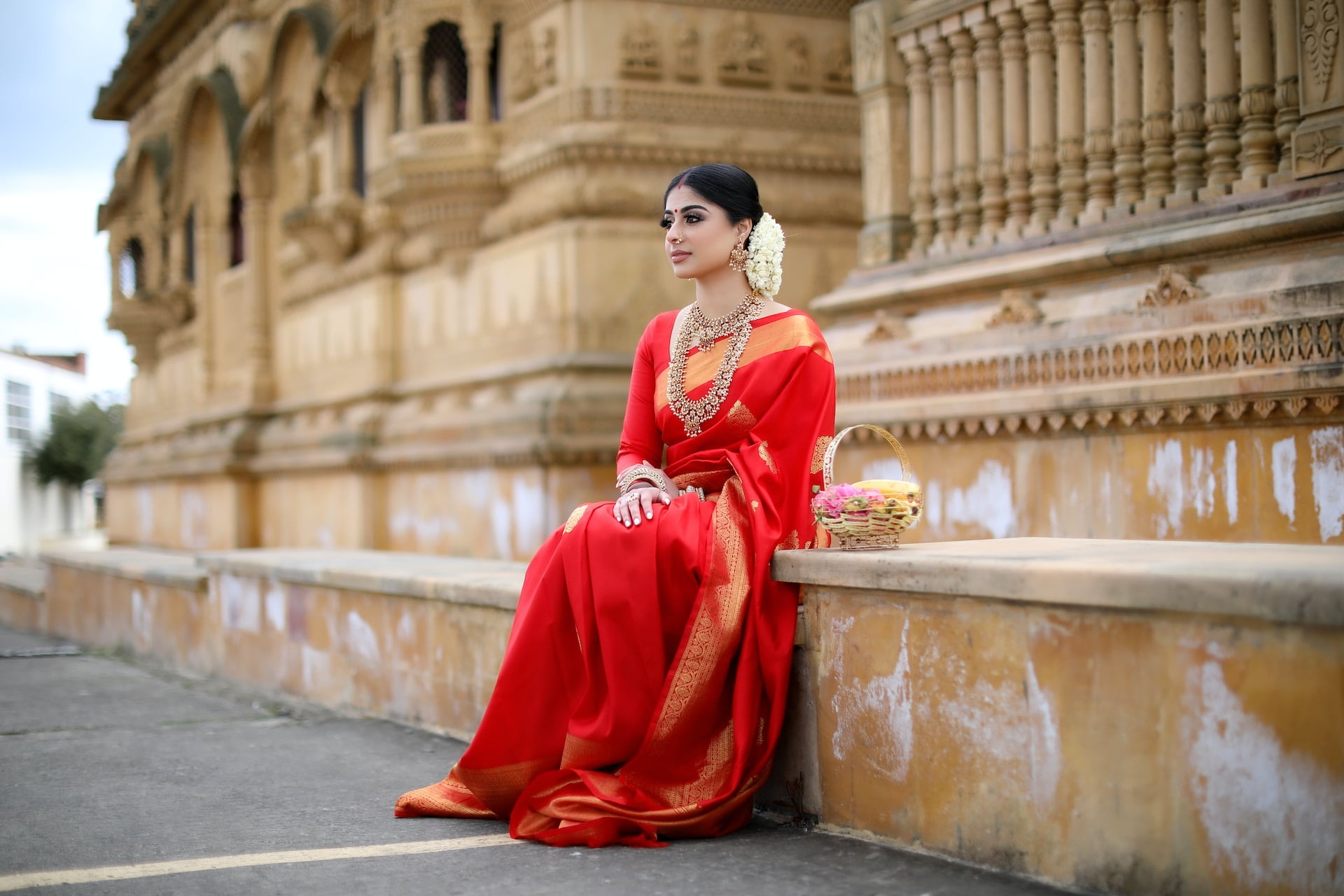Introduction
The sari is not just a piece of clothing but a symbol, an identity, and a beautiful expression of Indian culture. Its significance goes far beyond its stunning appearance, speaking volumes about India’s rich history and social fabric.
What Is a Sari?
A sari is a traditional Indian garment that consists of an unstitched drape varying from 5 to 9 yards in length and 2 to 4 feet in breadth. Typically wrapped around the waist, it is worn over a petticoat and paired with a blouse known as a “choli.” Saris come in an array of fabrics, including cotton, silk, and synthetic blends, and they often feature elaborate designs and decorations.
The History of Saris
The sari dates back over 5,000 years, with mentions found in the Vedas, ancient Indian scriptures. Originally, the sari was made from cotton or silk and was woven with gold and silver threads. Over the years, the sari has evolved to include new materials and intricate embroidery, reflecting changes in fashion and technology while staying true to its roots.
The Role of Saris in Indian Culture
In India, the sari is more than just a garment. It’s an important cultural symbol, worn on a variety of occasions from daily life to significant life events like weddings and festivals. Saris are often chosen to convey subtle messages, with certain colors and designs signifying particular sentiments or statuses. For example, red saris are often associated with marriage and love, while white saris may signify mourning.
Different Types of Saris
India’s diverse regions each offer their unique sari types. Some of the most renowned styles include:
- Banarasi Saris: Known for their fine silk and opulent embroidery, these saris are often worn on special occasions.
- Kanjeevaram Saris: Originating from Tamil Nadu, these are rich in color and texture and are a popular choice for brides.
- Chiffon Saris: Light and airy, chiffon saris are ideal for casual wear but can be dressed up for formal events.
Styles of Draping a Sari
The way a sari is draped can vary from region to region, and even from one individual to another. Common styles include:
- Nivi Style: The most common style, where the sari is wrapped around the waist and the loose end is thrown over the shoulder.
- Gujarati Style: The loose end of the sari is draped over the right shoulder rather than the left, and it is pinned at the back.
- Bengali Style: The sari is draped without pleats but includes a richly decorated pallu (loose end) that is displayed prominently.
Saris and Indian Weddings
In Indian weddings, the sari takes on special significance. It is often the garment of choice for the bride, reflecting her cultural heritage and personal style.
When to Wear Them
Weddings often feature multiple events, like the engagement, sangeet (musical evening), and reception. A sari may be appropriate for all or some of these occasions, depending on family traditions. Brides typically wear a more opulent, often heavier, sari for the main ceremony and may choose lighter, more comfortable saris for other events.
How To Purchase a Sari
When purchasing a sari, consider the fabric, the occasion, and your own comfort. Make sure to examine the quality of the material and the intricacy of the embroidery or print. Saris can be purchased from specialized boutiques, online stores, and even directly from weavers in certain regions.
Conclusion
The sari is more than just a beautiful garment; it is a tapestry of Indian culture, history, and social norms. Whether you’re draping a sari for the first time or have worn it for years, the garment stands as a versatile and meaningful element of Indian identity.
I hope this blog post helps you appreciate the rich complexity and enduring allure of the sari. From its historical roots to its modern adaptations, the sari is and will continue to be an integral part of India’s cultural fabric.


Leave a Reply